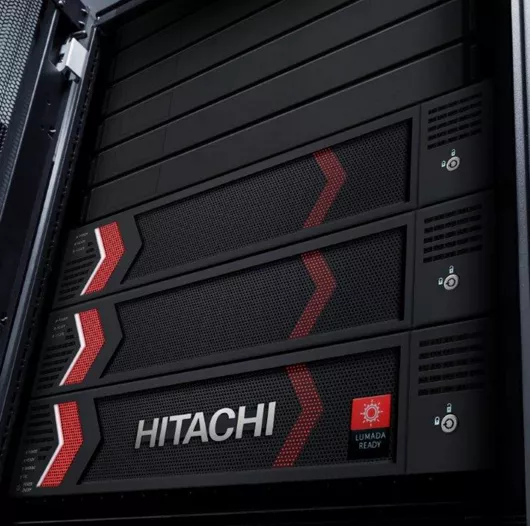Elevating VSP One to a New Level with Samsung QLC


Look back at Hitachi Vantara history, you’ll see we designed, built and shipped Hitachi FMDs (flash module drives). In those days, these demi-intelligent drives – which sported ARM cores (an industry first) – were considered quite special. Offering enterprise grade media robustness, they took on storage processing for the VSP controller.
Life was good.
Then just like that, we discontinued FMDs. Gone, one might say, in a proverbial “flash.”
At first glance, this action may have made us appear out of step with some of our industry contemporaries who provided proprietary flash media packaging akin to FMDs. However, if you know Hitachi’s R&D prowess as well as I do, our discontinuation wasn’t that surprising.
That’s because sometimes, being truly innovative ALSO means understanding when something is no longer needed because your industry partners have progressed their business sufficiently. And at the end of the day, if your innovations, combined with your partner’s innovations, helps your customers win… Well, then borrowing from those friends is the right thing to do.
So, that’s what we’re here to share with you today. About how we’re working with our friends at Samsung to add their innovations in QLC (quad level cell) media to our Virtual Storage Platform One (VSP One) Block storage controllers.
Taking VSP One to Another Level (Quad to be Exact)
Today we’re proud to announce the availability of Samsung’s industry leading dual ported 30TB QLC media on VSP One Block. This package includes loads of innovations to help our customers win big, derived from our R&D pedigree as a trusted provider of high-performance data infrastructure. These include:
The Beauty of Added Telemetry
The last item mentioned above is super important to our customers, their workloads and to Hitachi Vantara as their trusted data infrastructure provider. Because additional system telemetry increases transparency and awareness of what is actually running in the wild.
While we understand and will work with our customers to ensure that the best fit workload runs on a QLC powered system, we really want to understand more about the shape and character of those workloads.
Let’s imagine, for example, a read intensive data lakehouse workload running on a VSP One Block with QLC. While without any doubt, the primary workload is read intensive – i.e., lots of SQL SELECT queries – the lifecycle of this workload likely includes ancillary “micro-workloads,” including, but not limited to the following:
Therefore, access to the telemetry on these systems enables Hitachi Vantara, and our users, fine-grained visibility into the controller’s view of these micro-workloads. With this kind of telemetry data we can then continually improve, through kaizen, our usage of QLC ultimately benefiting our customers.
There’s a lot more to say about the impact of QLC with regard to high performance applications. And having been with Hitachi for a number of years, going back to the days of our FMD launch mentioned earlier, it says a lot about the level of innovation our customers can continue to expect to see at Hitachi Vantara.
Be sure to check back here in the coming weeks for more on QLC story.
Read more

Michael Hay is a distinguished technologist and product planning expert, currently serving in Hitachi Vantara’s CTO office. His expertise is centered on devising practical futures and innovative solutions by working backwards from the user. Previously, Michael held the role of VP of Products at Teradata, responsible for the Vantage platform on Private Clouds and Business Continuity as a Service for Vantage. Before that Michael worked at Hitachi in a series of roles, culminating in his position as VP and Chief Engineer, where he played a crucial role in developing data-driven applications for the oil and gas and financial services industries.
Michael holds a MS in Industrial and Systems Engineering from San Jose State University and a BS in Electrical Engineering from the University of New Mexico. Outside of work, he is a devoted husband and father with a deep appreciation for Japanese culture.